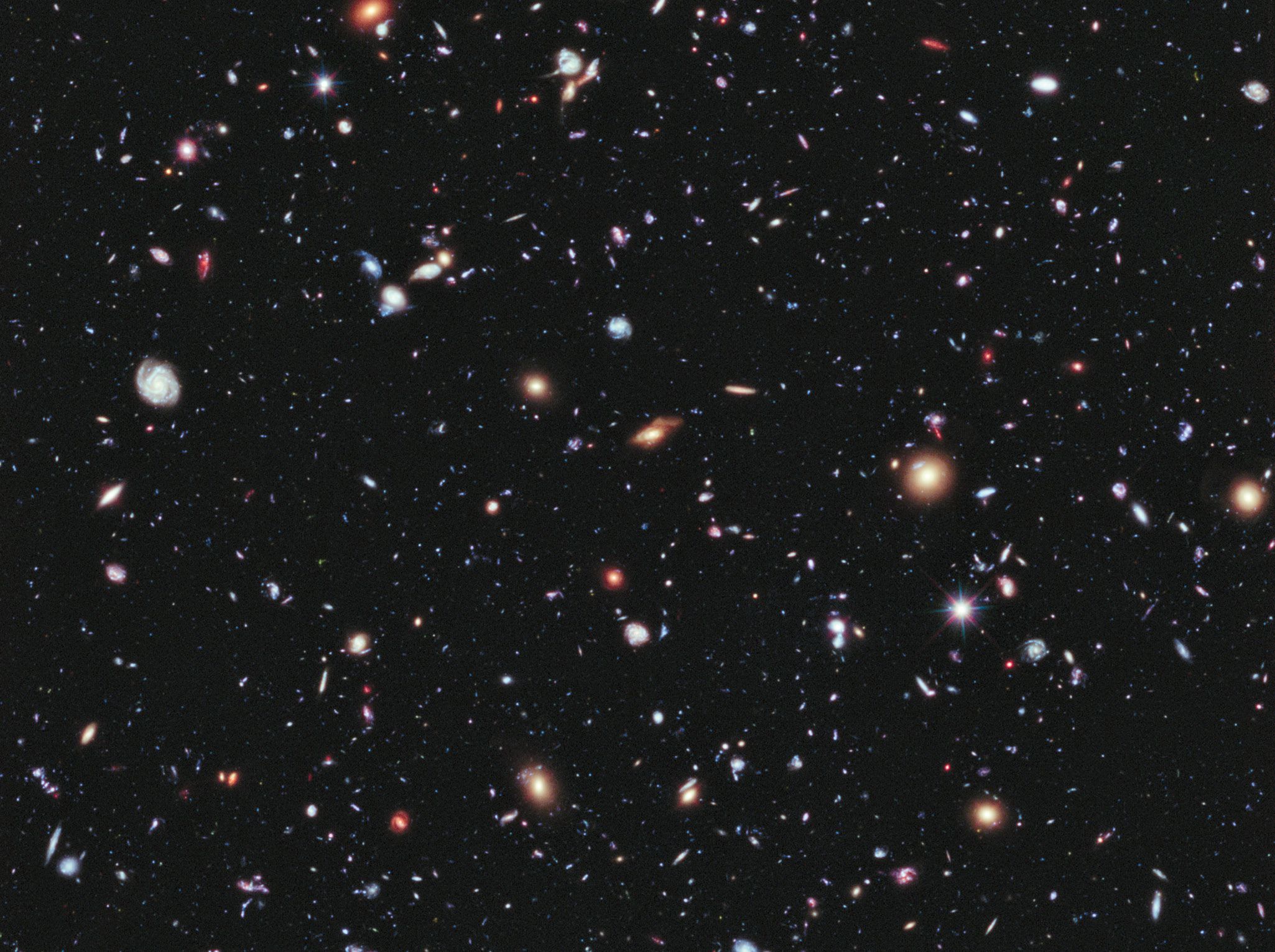A series of paradigm shifts
DOI: 10.1063/PT.3.5064
When asked to name a book for a general readership that would answer questions about the understanding of matter, time, the Big Bang, and more, the celebrated theoretical physicist Michael Dine couldn’t recommend one. So he decided to write his own, and This Way to the Universe: A Theoretical Physicist’s Journey to the Edge of Reality is the culmination of that effort.

The Hubble eXtreme Deep Field, an image of a region of space in the constellation Fornax, reveals galaxies that existed about 13.2 billion years ago.
NASA/ESA/G. ILLINGWORTH, D. MAGEE, AND P. OESCH, UNIVERSITY OF CALIFORNIA, SANTA CRUZ/R. BOUWENS, LEIDEN UNIVERSITY/HUDF09 TEAM

Dine has made important contributions to the fields of supersymmetry, string theory, and baryogenesis—an explanation for the imbalance of matter over antimatter in the early universe (see the article by Helen Quinn, Physics Today, February 2003, page 30
Taking the work of Isaac Newton as the start of modern physics, Dine takes the reader on a journey through the most eminent breakthroughs in theoretical physics. The story is built up in four parts, which Dine terms steps: The first two describe the well-established science of classical mechanics, quantum mechanics, and relativity. In the third part, titled “The Next Steps,” he addresses currently open problems and proposed solutions; the fourth, “And Stepping into the Unstable,” is about modern developments, mostly focused on string theory.
The book indeed covers a substantial amount of ground compared with most other popular-science books. It is playfully written and reads as if the author is telling a story around a campfire. Although Dine’s knowledgeable account of the history of science is mostly chronological, he does get sidetracked here and there. Given the density of information, it is impressive that the tone of the story remains light.

In steps 1 and 2, Dine describes the history of physics through a series of remarkable paradigm shifts. Newton proposed that nature was ruled by laws—the absolute and unchanging truths we seek as theoretical physicists. Michael Faraday and James Clerk Maxwell introduced us to fields, a concept that formed the bedrock for Albert Einstein’s theory of relativity and thereby the version of relativistic quantum mechanics that physicists use today.
In the later chapters, Dine switches to discussing developments in theoretical physics from his own vantage point. Memorable conversations, seminars he attended, and his own scientific collaborations form the common thread as the journey proceeds through two superstring revolutions to the current state of the field. Dine gives modest descriptions of theorems that bear his name, such as Affleck–Dine baryogenesis and the Dine–Seiberg problem in string theory, as well as anecdotes about colleagues. Notably absent, however, is Dine’s seminal work with Ann Nelson, for which they shared the prestigious J. J. Sakurai Prize for Theoretical Particle Physics in 2018.
Woven through the book is a so-called journey through powers of 10, from the tiny scales at which the quantum nature of matter cannot be ignored to the vast scales ruled by Einstein’s gravity. Even though the author provides examples to help readers imagine the enormous differences in scale, it might have been helpful if Dine had included illustrations in those sections.
The book occasionally touches on the sociology of science and the unfair exclusion of women and minorities from the academy. When Richard Feynman is first introduced, for example, a brief description of his career is accompanied by a footnote that refers to the current understanding of his misogyny. Although descriptions of early woman pioneers mention the hardships they faced, those remarks remain largely parenthetical. In short, the question of who gets to do science and at what cost is not a central theme in the book.
This Way to the Universe is an accessible and impressively complete account of the history and current state of research in theoretical physics. Dine’s infectious enthusiasm about the quest for nature’s underlying truths is obvious on every page. Fellow science enthusiasts will enjoy this book and its unusual peek into the journey of a theoretical physicist.
More about the Authors
Djuna Croon is an assistant professor at the Institute for Particle Physics Phenomenology at Durham University in the UK. Her work focuses on astroparticle physics, the cosmology of the early universe, and gravitational waves.
Djuna Croon. Durham University, Durham, UK.
